The great stone statues (moai) 'walked' (he
nekeneke) to their proper places, i.e. they were capable of moving
as if by themselves ('automobiles') as if they had been
nahe plants (nehenehe, Angiopteris
evecta):
... I remember from somewhere in Heyerdahl's
books that he considered it significant that
neke-neke was a special word in the
vocabulary of Easter Island, it meant 'walking
without legs, walking by moving the weight this
side and that slowly advancing forward'. He had
discovered the word when he asked how the
statues had been moved - they walked (neke-neke)
was the answer ...
... The plant was introduced by
Captain Bligh from Tahiti as a staple food for slaves
and cultivated in the Castleton Gardens in 1860. From
there it was able to distribute itself throughout the
eastern half of the island ...
This extraordinary phenomenon could not have gone unnoticed.
The creators of Manuscript E seem to have underlined the
remarkable phenomenon of slowly automoving to other locations. There were double places for nehenehe in
the list of things brought along by the Royal
Double Canoe. And the pages numbered 68-69 were doubled - i.e. those
pages which listed these 'things' (me'e).
And now, in page E:87, the stone statue depicting king Oto Uta
had to be fetched (moved) from where he had been abandonded in
Hiva:
... The men also (wanted to) take the figure on board the canoe
(addition in parenthesis: the name of the figure was Oto Uta),
but they left the figure out in the bay [i mua ana i te hanga
i rehu ro ai.te moai] ... [E:73 → 365 / 5 → March 14
→ 3-14 → π]
I have
suggested the ariki motogi ko Oto Uta corresponded to the first
of the great ancient star kings, viz. Hamal:
|
ko oto uta |
ariki motongi |
1 |
Hamal (*0 → *30) |
|
ko tangaroa.a oto uta |
ariki motongi |
2 |
(*27 → *57) |
|
ko tiki hati.a tangaroa |
ariki motongi |
3 |
(*54
→
*84) |
|
ko roroi.a tiki hati |
ariki motongi |
4 |
(*81
→
*111) |
|
ko tuu kumā.a roroi |
ariki motongi |
5 |
(*108
→
*138) |
|
ko ataranga.a tuu kumā |
ariki motongi |
6 |
Alkes (*135 →*165) |
|
ko harai.a ataranga |
ariki motongi |
7 |
Bharani (*41) |
|
ko taana.a harai |
ariki motongi |
8 |
Aldebaran (*68) |
|
ko matua.a taana |
ariki motongi |
9 |
Canopus (*95) |
|
|
|
ko hotu.a matua |
ariki motongi |
10 |
Antares (*249) |
... Strassmeier and Epping, in their
Astronomishes aus Babylon, say that there its stars formed
the third of the twenty-eight ecliptic constellations, -
Arku-sha-rishu-ku, literally the Back of the Head of
Ku, - which had been established along that great circle
milleniums before our era; and Lenormant quotes, as an
individual title from cuneiform inscriptions, Dil-kar,
the Proclaimer of Dawn, that Jensen reads As-kar, and
others Dil-gan, the Messenger of Light.
George Smith inferred from the tablets that
it might be the Star of the Flocks; while other
Euphratean names have been Lu-lim,
or Lu-nit, the Ram's Eye; and Si-mal or Si-mul,
the Horn star, which came down even to late astrology as the
Ram's Horn. It also was Anuv, and had its
constellation's titles I-ku and I-ku-u, - by
abbreviation Ku, - the Prince, or the Leading One, the
Ram that led the heavenly flock, some of íts titles at a
different date being applied to Capella of Auriga. Brown
associates it with Aloros, the first of the ten mythical kings
of Akkad anterior to the Deluge, the duration of whose reigns
proportionately coincided with the distances apart of the ten
chief ecliptic stars beginning with Hamal, and he deduces from
this kingly title the Assyrian Ailuv, and hence the
Hebrew Ayil; the other stars corresponding to the other
mythical kings being Alcyone, Aldebaran, Pollux, Regulus, Spica,
Antares, Algenib, Deneb Algedi, and Scheat
...
The creators of
Manuscript E probably associated
Oto Uta with
Hinariru:
... Hotu said to Teke [he
ki.kia Teke.a Hotu], 'Where is the
figure Oto Uta (corrected in the manuscript for
Hina Riru)?'
...
he ki.kia Teke.a
Hotu.ihē te moai. (corrected to a
oto from a hi(-)
corrected to uta
from nariru).
Page E:86 ends with the stone figure of
Hina-riru and page E:87 is beginning with the stone
figure of king Oto Uta.
Presumably it meant Hinariru was a star preceding
Hamal. The name Sabik for
η
Ophiuchi menas 'the Preceding
One'.
Page E:86 tells about Makoi
being left behind on Easter Island when the remaining 5
Explorers sailed home to Hiva.
From there (Tangaroa Uri 25) to
the day when king Hotu became
worried about where king Oto Uta
was, i.e. in Tangaroa Uri 30,
there were 5 days:
|
April 25 (115) |
5 + 56 |
June 25 (176) |
5 + 116 |
Oct 25 (298) |
5 + 56 |
Dec 25 (359) |
5 + 116 |
|
61 |
2 * 61 |
61 |
2 * 61 |
|
183 |
183 |
|
366 = 2 * 183 = 6 * 61 |
And from the autumn equinox (265) at Antares
to the Sting of the Scorpion (υ Scorpii) there were 15
days:

|
SEPT 20
(*183) |
21 |
EQUINOX |
23 (266) |
24 |
25 |
 |
 |
 |
 |
 |
 |
|
Ga7-14 |
Ga7-15 |
Ga7-16 |
Ga7-17
(186) |
Ga7-18 (103 + 84) |
Ga7-19 |
|
Heart-5 (Fox)
σ
Scorpii
(247.0),
HEJIAN =
γ
Herculis
(247.2),
ψ
Ophiuchi (247.7) |
ρ
Ophiuchi (248.1),
KAJAM
(Club) =
ω
Herculis
(248.3),
χ
Ophiuchi (248.5),
SHE LOW (Market Tower) =
υ
Ophiuchi,
Tr.
Austr. (248.7), ζ Tr. Austr. (248.8) |
Al Kalb-16 (The Heart) /
Jyeshtha-18 (Eldest) /
ANA-MUA-1 (Entrance pillar)
ANTARES
= α Scorpii
(249.1),
MARFIK (Elbow) = λ Ophiuchi,
φ Ophiuchi (249.5), ω Ophiuchi (249.8) |
γ Apodis (250.1), σ Herculis (250.3), θ Tr. Austr.
(250.6), τ Scorpii (250.7) |
HAN = ζ Ophiuchi
(251.0) |
ζ
Herculis,
η
Tr. Austr.
(252.1), η Herculis, β Apodis (252.5) |
|
JULY 2 (183) |
83 |
SEPT 24 (267) |
 |
 |
|
11h (167.4)
χ Leonis, χ¹ Hydrae (167.1), χ² Hydrae
(167.3)
*167.4 - *41.4 = *126.0 |
HAN = ζ Ophiuchi
(251.0) |
|
|
Nov 23
(327) |
24 |
25 |
26
(*250) |
27 |
28 |
|
°Nov 19 |
20 (324) |
21 |
22
(*246) |
23 |
24 |
|
'Oct 27
(300) |
28 |
29
(*222) |
30 |
31 |
'Nov 1 |
|
"Oct 13 |
14 |
Tagaroa Uri 15 |
16 |
17 (290) |
18 |
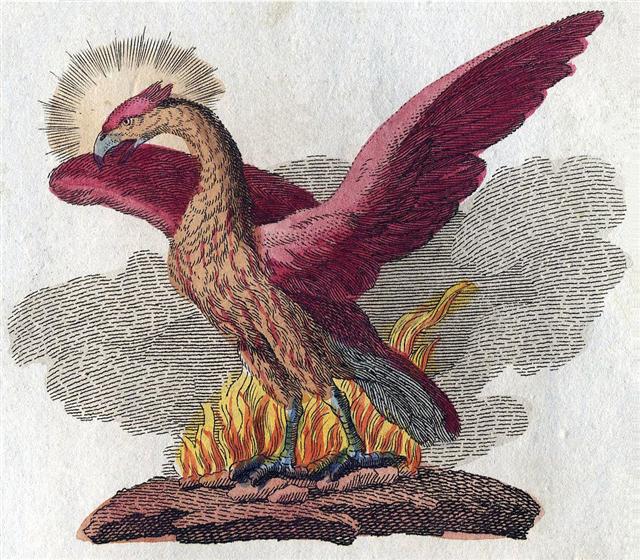 |
|
OCT 1 |
2 |
3 (*196) |
4
(277) |
5 |
6 |
 |
 |
 |
 |
 |
 |
|
Ga7-25 |
Ga7-26 |
Ga7-27 |
Ga7-28 |
Ga7-29 |
Ga7-30 (199) |
|
17h (258.7)
ARRAKIS = μ Draconis
(258.7) |
Mula-19 (The Root)
SABIK
(The Preceding One) =
η
Ophiuchi
(259.7),
η
Scorpii (259.9) |
NODUS I =
ζ
Draconis
(260.0),
π
Herculis (260.7),
RAS ALGETHI
=
α
Herculis
(260.8) |
SARIN =
δ
Herculis
(261.0),
ο
Ophiuchi (261.4)
*220.0 = *261.4 - *41.4
ALRISHA (α Piscium) |
ξ Ophiuchi (262.2), θ Ophiuchi,
ν Serpentis, ζ, ι Apodis
(262.4), ι Arae (262.8), ρ
Herculis (262.9)
*221.0 = *262.4 - *41.4 |
β, γ Arae (263.3), κ Arae
(263.5), σ Ophiuchi (263.6) |
|
Dec 4 |
5 |
6 (*260) |
7 |
8 (342) |
9 |
|
°Nov 30 |
°Dec 1 (335) |
2 (*256) |
3 |
4 |
5 |
|
'Nov 7 |
8 |
9 |
10 (314) |
11 |
12 (*236) |
|
"Oc 24 |
Tangaroa Uri 25 |
26 |
27 (300) |
28 |
29 (*222) |
|
VIRGO: |
|
14 |
Chitra
the bright one |
α Virginis
Spica |
Bright jewel or
pearl |
Oct 9 (*202) |
|
BOOTES: |
|
15 |
Svāti
very good |
α Bootis
Arcturus |
Shoot of plant,
coral |
Oct 22 (*215) |
|
LIBRA: |
|
16 |
Visakha
forked, having
branches (or the
gift, rādhā) |
α, β, γ and ι Librae
Zuben Elgenubi |
Triumphal arch,
potter's wheel |
Oct 31 (*224) |
|
SCORPIUS:
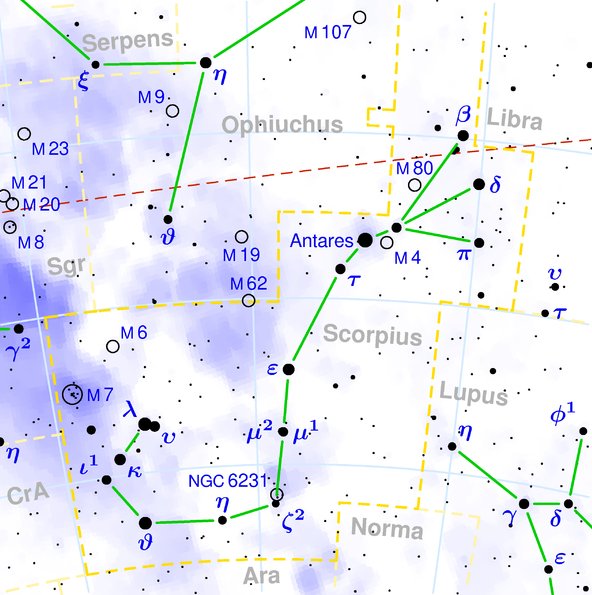 |
|
17 |
Anuradha
following rādhā |
β, δ, and π Scorpii
Vrischika (?) |
Triumphal archway,
lotus |
Nov 17 (*241) |
|
18 |
Jyeshtha
the eldest, most
excellent |
α, σ, and τ Scorpii
Antares (?) |
Circular amulet,
umbrella, earring |
Nov 25 (*249) |
|
19 |
Mula
the root |
ε,
ζ,
η,
θ, ι, κ, λ, and μ
Scorpii
η Scorpii ? |
Bunch of roots tied
together, elephant
goad |
Dec 5 (*259) |
|
|
OCT 7 (*200) |
8 |
9 |
10 |
 |
 |
 |
 |
|
Ga7-31 (200 = 180 + 20) |
Ga7-32
|
Ga7-33 |
Ga7-34 |
|
LESATH
(Sting) =
υ
Scorpii,
δ
Arae (264.7),
CHOO (Club) =
α
Arae
(264.9) |
Al Shaula-17
ALWAID (Mother Camels) = β Draconis, MAASYM (Wrist) = λ Herculis
(265.1),
SHAULA
(Sting) =
λ
Scorpii
(265.3),
KUMA = ν
Draconis
(265.6),
σ
Arae (265.9)
HAMAL (α
ARIETIS)
|
RAS ALHAGUE
= α Ophiuchi
(266.1),
SARGAS = θ Scorpii (266.3),
μ Ophiuchi, π Arae (266.5),
NAN HAE
(Southern Sea) = ξ Serpentis
(266.6), AL
DHĪLI (The Wolf) = ω Draconis,
ι Herculis (266.7) |
λ
Arae (267.1),
GIRTAB
(Seizer) = κ Scorpii,
ο
Serpentis (267.6),
DSIBAN (Wolf Pair) = ψ Draconis
(267.9) |
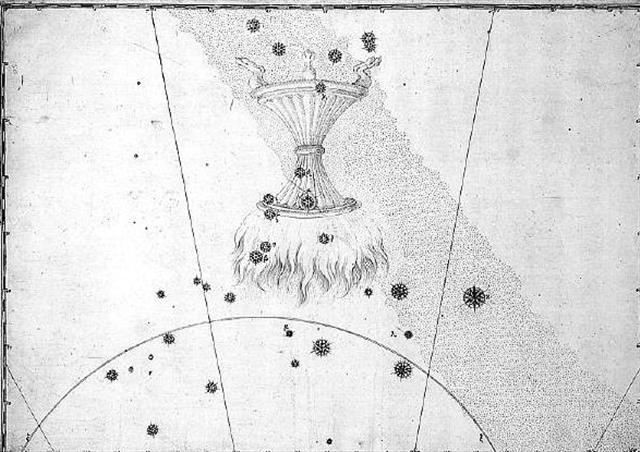 |
|
Dec 10 (*264) |
11 (345) |
12 |
13 |
|
°Dec 6 (*260) |
7 (341) |
8 |
9 |
|
'Nov 13 (*237) |
14 |
15 |
16 (320) |
|
Tangaroa Uri 30 |
"Oct 31 (*224) |
"Nov 1 (305) |
2 |
|
Lesath was a name both for
ν (*244) and for υ (*264) Scorpii, and there were 20 right ascension
days from ν to υ.
... Upsilon (uppercase Υ,
lowercase υ; Greek: ύψιλον, ıpsilon ... is the 20th letter of the Greek
alphabet. In the system of Greek numerals, Υ has a value of 400. It is
derived from the Phoenician waw ... Waw (wāw 'hook') is the sixth
letter of the Semitic abjads ...
... Upsilon is known as
Pythagoras' letter, or the Samian letter, because Pythagoras used it as
an emblem of the path of virtue or vice ... |
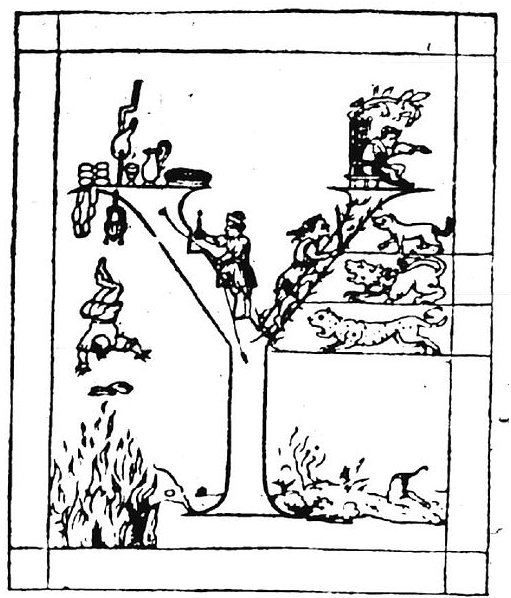
|
SEPT 17 (260) |
18 |
19 (*182) |
 |
 |
 |
|
Ga7-11 |
Ga7-12 (181) |
Ga7-13 |
|
ψ
Scorpii (244.6),
LESATH
(Sting) =
ν
Scorpii
(244.8) |
χ
Scorpii (245.1),
YED PRIOR (Hand in Front) =
δ
Ophiuchi,
δ
Tr.
Austr. (245.5) |
YED POSTERIOR (Hand Behind) =
ε
Ophiuchi,
RUKBALGETHI SHEMALI
(Northern Knee of the Giant) = τ
Herculis
(246.6).
δ
Apodis (246.7),
ο
Scorpii (246.8) |
|
Nov 20 (324) |
21 (*245) |
22 |
|
°Nov 16 (320) |
17 |
18 (*242) |
|
'Oct 24 |
25 (*218) |
26 (299) |
|
"Oct 10 |
11 (*204) |
12 (285) |
|
... In other
words, the ancient Druidic
religion based on the oak-cult
will be swept away by
Christianity and the door - the
god Llyr - will languish
forgotten in the Castle of
Arianrhod, the Corona
Borealis. This helps us to
understand the relationship at
Rome of Janus and the White
Goddess Cardea who is ... the
Goddess of Hinges who came to
Rome from Alba Longa. She was
the hinge on which the year
swung - the ancient Latin, not
the Etruscan year - and her
importance as such is recorded
in the Latin adjective
cardinalis - as we say in
English 'of cardinal importance
- which was also applied to the
four main winds; for winds were
considered as under the sole
direction of the Great Goddess
until Classical times ...
|
 |
 |
 |
|
ika hiku |
Ga7-12 (181) |
Ga7-27 (*116) |
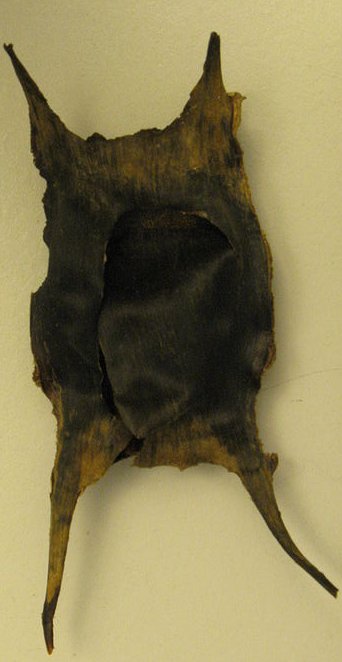
|
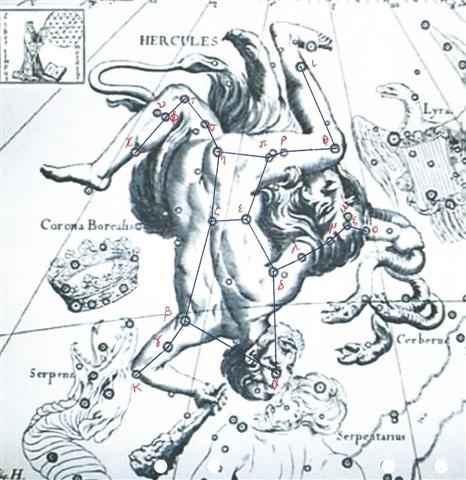
265 + 15 = 280 = 364
- 84 (Julian spring equinox).
Hamal rose with
the Sun in 'March 24, which was 183
(= 366 / 2) days earlier than κ Virginis.
 |
 |
|
Cb1-4 (396) |
Cb1-5 |
|
Arku-sha-rishu-ku-2 (Back of
the Head of Ku)
2h (30.4)
κ
Arietis (30.3),
HAMAL
(Sheep) =
α
Arietis
(30.5)
ALKES (α
Crateris)
*354.0 = *30.4 - *41.4 |
DELTOTUM = β Trianguli
(31.2), ι Trianguli (31.7),
η Arietis (31.9)
|
|
April 20 |
21 (111 = 84 + 27) |
|
'March 24 |
Julian equinox (84) |
|
FEBR 15
(365
+ 47 = 14 * 29½) |
16 (414 → Bharani) |
|
14h (213.1)
π
Hydrae,
χ
Centauri (213.0),
MENKENT (Shoulder of the
Centaur) =
θ
Centauri
(213.1) |
Neck-2 (Dragon)
ASELLUS TERTIUS (3rd Ass
Colt) =
κ
Bootis,
κ
Virginis,
14 Bootis
(214.8) |
|
Oct 20 |
21 (294) |
|
'Sept 23 (266) |
24 |
|
AUG 17 (229) |
18 (294 - 64)
|

And 320 / 10 days
after κ Virginis was τ Herculis.
 |
31 |
 |
|
150 |
182 |
|
κ Virginis |
τ Herculis |
| Egyptian hand |
 |
Phoenician kaph |
 |
Greek kappa |
Κ (κ) |
|
Kaph is thought to have been derived from a pictogram of a hand (in both modern Arabic and modern Hebrew, kaph means palm/grip) ...
... The manik, with the tzab, or serpent's rattles as prefix, runs across Madrid tz. 22 , the figures in the pictures all holding the rattle; it runs across the hunting scenes of Madrid tz. 61, 62, and finally appears in all four clauses of tz. 175, the so-called 'baptism' tzolkin. It seems impossible, with all this, to avoid assigning the value of grasping or receiving. But in the final confirmation, we have the direct evidence of the signs for East and West. For the East we have the glyph Ahau-Kin, the Lord Sun, the Lord of Day; for the West we have Manik-Kin, exactly corresponding to the term Chikin, the biting or eating of the Sun, seizing it in the mouth.

 
The pictures (from Gates) show east, north, west, and south; respectively (the lower two glyphs) 'Lord' (Ahau) and 'grasp' (Manik). Manik was the 7th day sign of the 20 and Ahau the last ... |
| Egyptian sticks |
 |
Phoenician taw |
 |
Greek chi |
Χ (χ) |
| Greek tau |
Τ (τ) |
|
In Plato's Timaeus, it is explained that the two bands that form the soul of the world cross each other like the letter Χ.

Roman XII = 12 → XIII = 13, with the Nose in between - and later, after the Mouth, the cycle would begin anew (I).
Chi or X is often used to abbreviate the name Christ, as in the holiday Christmas (Xmas). When fused within a single typespace with the Greek letter Rho, it is called the labarum and used to represent the person of Jesus Christ. (Wikipedia)

... tau is the 19th letter of the Greek alphabet. In the system of Greek numerals it has a value of 300 ... Taw is believed to be derived from the Egyptian hieroglyph meaning 'mark' ...
Taw, Tav or Taf is the twenty-second and last letter in many Semitic abjads ... In gematria Tav represents the number 400, the largest single number that can be represented without using the Sophit forms ...
'From Aleph to Taf' describes something from beginning to end; the Hebrew equivalent of the English 'From A to Z' ...
Tav is the last letter of the Hebrew word emet, which means truth. The midrash explains that emet is made up of the first, middle, and last letters of the Hebrew alphabet (Aleph, Mem, and Tav...). Sheqer (falsehood), on the other hand, is made up of the 19th, 20th, and 21st (and penultimate) letters.
Thus, truth is all-encompassing, while falsehood is narrow and deceiving. In Jewish mythology it was the word emet that was carved into the head of the Golem which ultimately gave it life. But when the letter 'aleph' was erased from the Golem's forehead, what was left was 'met' - dead. And so the Golem died ... (Wikipedia)

|
...
He
turned
round
and
round
to
the
right
as
he
fell
from
the
sky
back
to
the
water.
Still
in
his
cradle,
he
floated
on
the
sea.
Then
he
bumped
against
something
solid.
'Your
illustrious
grandfather
asks
you
in',
said
a
voice.
The
Raven
saw
nothing.
He
heard
the
same
voice
again,
and
then
again,
but
still
he
saw
nothing
but
water.
Then
he
peered
through
the
hole
in
his
marten-skin
blanket.
Beside
him
was
a
grebe.
'Your
illustrious
grandfather
asks
you
in',
said
the
grebe
and
dived.
Level
with
the
waves
beside
him,
the
Raven
discovered
the
top
of a
housepole
made
of
stone.
He
untied
himself
from
his
cradle
and
climbed
down
the
pole
to
the
lowermost
figure.
Hala
qaattsi
ttakkin-gha,
a
voice
said:
'Come
inside,
my
grandson.'
Behind
the
fire,
at
the
rear
of
the
house,
was
an
old
man
white
as a
gull.
'I
have
something
to
lend
you',
said
the
old
man.
'I
have
something
to
tell
you
as
well.
Dii
hau
dang
iiji:
I am
you.'
Slender
bluegreen
things
with
wings
were
moving
between
the
screens
at
the
back
of
the
house.
Waa'asing
dang
iiji,
said
the
old
man
again:
'That
also
is
you.'
The
old
man
gave
the
Raven
two
small
sticks,
like
gambling
sticks,
one
black,
one
multicoloured.
He
gave
him
instructions
to
bite
them
apart
in a
certain
way
and
told
him
to
spit
the
pieces
at
one
another
on
the
surface
of
the
sea.
The
Raven
climbed
back
up
the
pole,
where
he
promptly
did
things
backwards,
just
to
see
if
something
interesting
would
occur,
and
the
pieces
bounced
apart.
It
may
well
be
some
bits
were
lost.
But
when
he
gathered
what
he
could
and
tried
again
-
and
this
time
followed
the
instructions
he
had
been
given
-
the
pieces
stuck
and
rumpled
and
grew
to
become
the
mainland
and
Haida
Gwaii
...

|

























